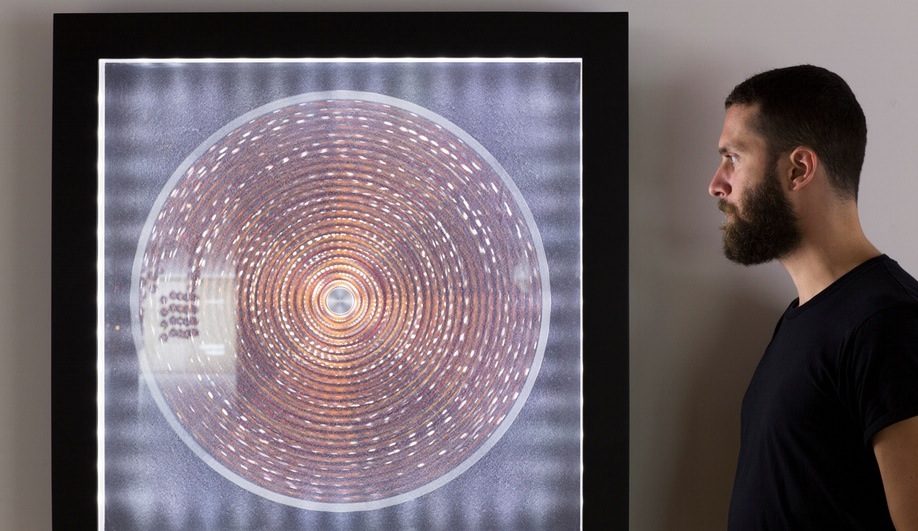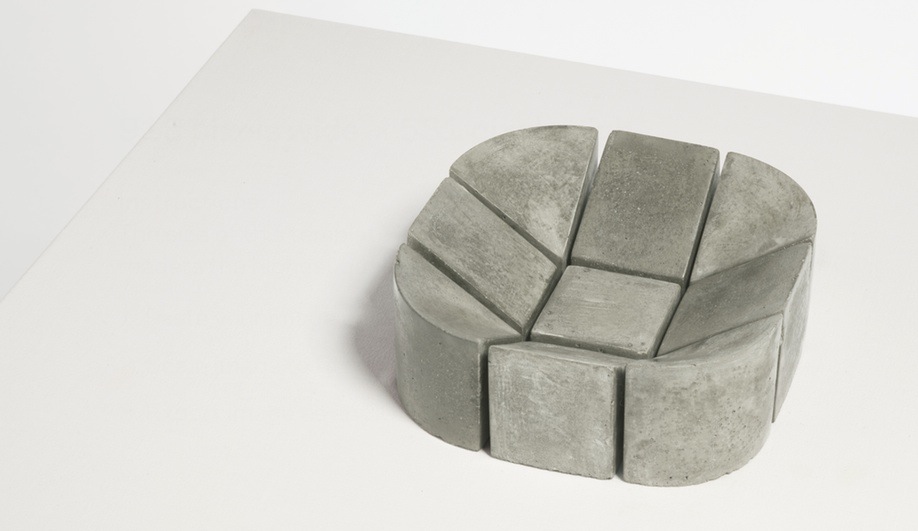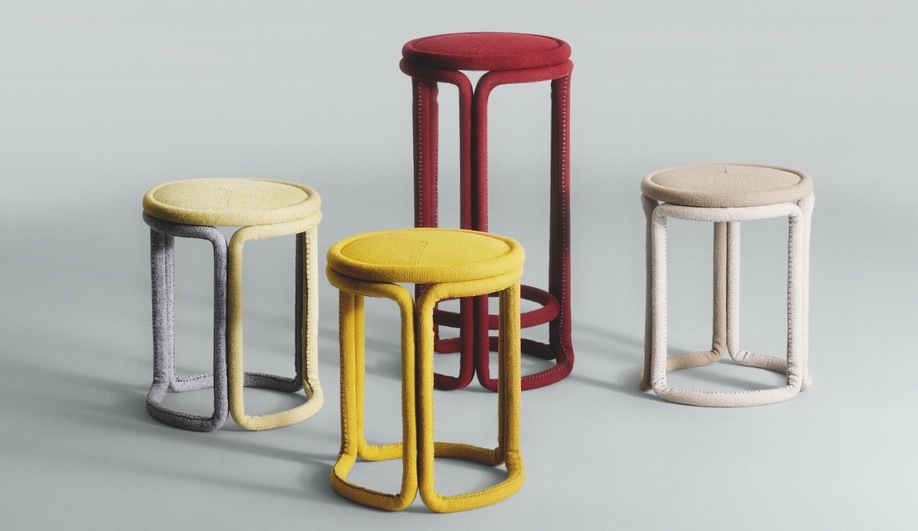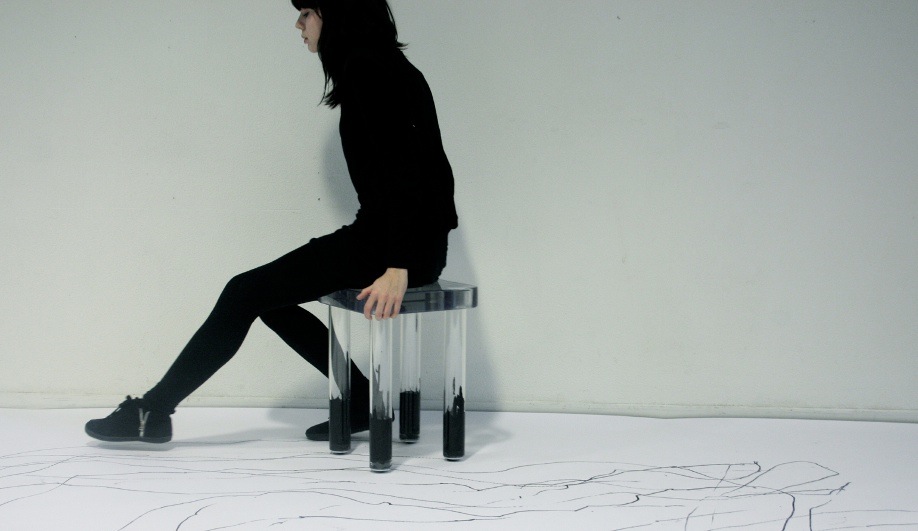It’s been a whirlwind few years for Philippe Malouin. The Design Academy Eindhoven alumnus has created such renowned works as the Gridlock collection of Brutalism-inspired furnishings, and Blur, a series of LED paintings for Swarovksi – as well as running the interior design studio Post-Office. He was also named a W Hotels Designer of the Future in 2012. Last January, he delivered a Trade Talk at Toronto’s Interior Design Show, then sat down with Azure to discuss his experimental work and the state of design. He offers advice for young designers, while also revealing the manufacturers that he would love to work with.
How influential was your education at the Design Academy Eindhoven?
The funny thing is, I think it had more of an impact after I graduated than before. This way of generating ideas is a great source of inspiration. The forefathers of Design Academy Eindhoven are Droog, and Droog in the early 90s revolutionized design and made it so democratic, attainable. Some would say it’s elitist, but I don’t think it is. It just made normal, everyday people want to be part of design and to understand it. It changed the perception of design from that very stern, unapproachable thing on a plinth that you can’t afford to really basic materials and concepts.
You use videos to document your design process, but they also show how much fun your team has in the studio. How important is having a playful process?
I have a small studio, with two employees and two interns and I intend to keep my studio fun because there’s no point in becoming estranged from the people you work with and being this weird character who just sketches things and leaves. We are a team, we love each other and we laugh. But as my studio grows we have a lot more responsibilities and those are kind of weighing. I do a lot more admin than I thought I would.
With so much experimentation some things probably don’t come together, but do they feed into other ideas?
Always. You should never think of your specific goal: this should be a chair or this should be a lamp. We don’t think like that. We just think of an interesting transformation process. And then it naturally unveils itself to be this one thing, or we’ll discover something and we don’t know what to do with it and we put it on the shelf. Then when we get a commission we’re like, “This is what we’re going to use for it, because it’s perfect, and this finish is perfect for, say, a small box that you put things in and that needs to feel this way and the geometry is interesting and you can develop a whole range for it…” So it’s very nonlinear. We never work in a linear manner for some of the commissions we receive.
On the business end, how do you sustain experimentation? Does one big commission do it?
We are very lucky. We do get good commissions, with very generous budgets sometimes that allow us to carry out experiments or allow us to explore things we have no idea about – like the Swarovski commission, where we were working with electronics, programming, and understanding the spectrum of light and LED direction. As soon as we stop learning, our studio will get boring. And I wanna keep learning. Also, Post-Office, our interior design studio equates to roughly 50 per cent of our income; we work on a range of interior projects – a lot of offices and shops recently.
What are you excited about in the design world?
I’m excited that designers don’t have to be that very specific idea of one set of responsibilities and one set of output and inputs. Designers can exist in a multitude of ways and design education can go far beyond just creating a product. I am, at heart, 100 per cent a product designer, but there’s so many ways to be a designer.
A lot of schools, like Design Academy Eindhoven and the Royal College of Art, are really nurturing this idea of not existing in one sphere. You can work in the art world, you can work in architecture, you can work in research. Also, it’s becoming democratic, and a lot less about the big design star and the persona and much more open and inconclusive.
At same time, almost everyone who goes to design school comes from an analogous social background, which is a shame. It’s so expensive to live in London to begin with, besides the financial strain of tuition fees, and producing a body of work while you’re there. You’re talking about 50,000 pounds a year. People of different socio-economic backgrounds can’t afford that. In the UK, the arts council used to fund everyone, and if you had an interest in art or design or alternative education, you had that possibility, whereas with the current financial situation all that has been taken away so only rich kids can do this and it’s not fair.
What advice would you give something from a lower-middle class background who wants to be a designer?
Talent has nothing to do with who your parents are. I think it’s all about learning, with how the Internet is, learning how things are made, and just learning. You have to communicate your talent and email it and get attention and position yourself out there and show off your talent in a really intelligent and cohesive way – in a manner that everyone gets how talented you are. Maybe there’s a chance for you to get a grant and study.
Which manufacturers would you love to work with?
I would kill to work with Cappellini and Artek. And Flos, I have a lamp I would love to show them. I don’t want to contact them, I think it’s bad manners. I don’t know how to. We only do work for people who ask us to. I never go out and approach a company.






